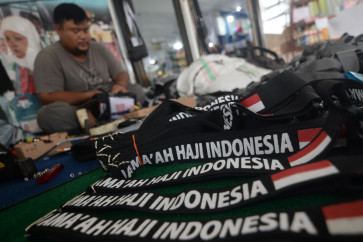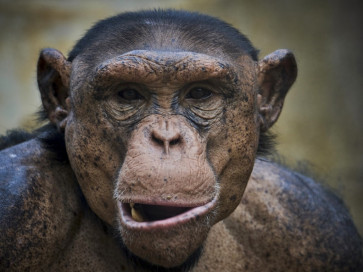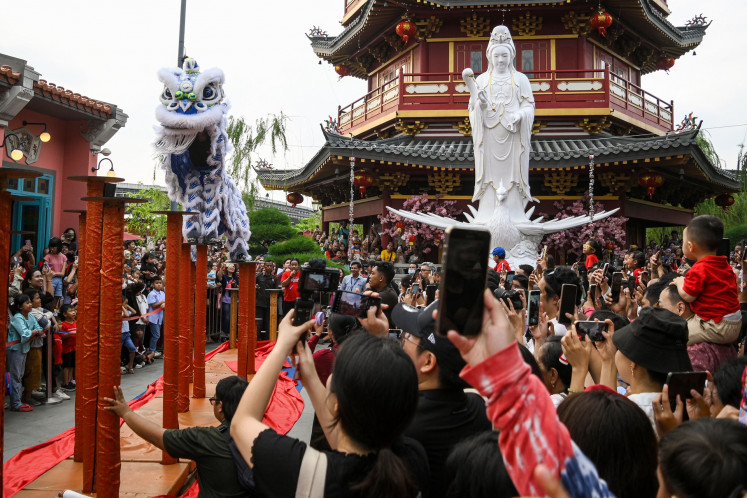In Tune: The Musical Masterpiece of ‘Tiga Dara’
(Courtesy of SA Film)For those who have seen the restored version of the 1956 classic Tiga Dara (Three Girls), now in movie theaters, it is easy to see why the movie was one of the best produced in this country, although not the masterpiece that director Usmar Ismail intended it to be (he was reportedly ashamed of it, given its theme of romance)
Change text size
Gift Premium Articles
to Anyone

(Courtesy of SA Film)
For those who have seen the restored version of the 1956 classic Tiga Dara (Three Girls), now in movie theaters, it is easy to see why the movie was one of the best produced in this country, although not the masterpiece that director Usmar Ismail intended it to be (he was reportedly ashamed of it, given its theme of romance).
As his studio PT Perfini continued to struggle financially, Usmar was forced to produce a hit — following a string of politically themed movies that included a true masterpiece Lewat Djam Malam (After the Curfew) — and Usmar pulled out all the stops for Tiga Dara. Usmar ditched his Italian neorealist tendency and embraced the camp and pomp of Hollywood musicals, which were all the rage in the early 1950s. In fact, the movie was inspired by the 1936 Hollywood musical Three Smart Girls. With the help of scriptwriter M. Alwi Dahlan, Usmar came up with an intelligent storyline, which allowed each individual character in the movie to be funny and unabashedly smart throughout the duration of the film. All the characters have their own moment to shine — and some of the best one-liners ever written for an Indonesian film.
And then there’s the soundtrack, with 10 earworms that will stay in your mind weeks after you exit the cinema, songs that will make you reconsider whatever preconceptions you had about Indonesian pop, compositions that serve as proof how cosmopolitan Indonesia, or at least Jakarta, was in the early 1950s, tunes that could render irrelevant the artificial barrier erected to separate the East and the West, between Malay music and big band or French chanson. These were feats that could only be achieved by two of Indonesia’s greatest composers, Sjaiful Bachri, who wrote seven tunes for Tiga Dara, and national hero Ismail Marzuki, who contributed one song for the film from the 10. No wonder that the soundtrack won the Citra Award — the Indonesian film industry’s equivalent of the Oscars — for best musical arrangement in 1960, the first year of the awards.
The leader of Orkes Studio Djakarta, Sjaiful was at the top of his game when given the assignment by Usmar (he went on to find greater fame in Malaysia and is credited by some as writing a song that would later become the country’s national anthem). He approached the job with an occidental eye, looking to subvert the conventions of western tradition, a stunt that he pulled off with “Tamasya” (Vacation), which also serves as a high-water mark for the film, sonically and visually. Opening with a flamenco-style guitar intro, “Tamasya” launches into a traditional Malay composition, accentuated by gendang (traditional Malay drums) and eerie flute breaks, which foreground one of singer Said Effendi’s finest vocal performances. The call-and-response vocals between Said and female backup singers add drama to the song, and with Usmar bringing the singing and dancing to the outdoors, the scene is the equivalent of The Sound of Music’s opening sequence (it also helps that it was shot in the hilly region south of Jakarta).
Another stunner from the film is the brief composition “Lagu Gembira” (Happy Song), used in another one of the film’s most memorable scenes, when Indriati Iskak’s character Nana and her boyfriend Herman (Bambang Irawan, in a star-making performance), share a jeep ride along North Jakarta’s seaside. A sparkling jazz tune accentuated by a heavenly violin break, the dynamic between Indriati and Bambang in this tune brings to mind the passive-aggressive back-and-forth between Serge Gainsbourg and Jane Birkin circa 1969.

Tiga Dara billed itself as a musical comedy, but at least two tracks, “Senandung Lagu Lama” (Old Song) and “Bimbang Tanpa Pegangan” (Lost Without Guidance), bear the hallmark of melancholic ballads that would make Edith Piaf proud. In “Senandung”, singer Elly Srikudus in fact gives her best take on Piaf, complete with pathos and drama that would send present-day divas rushing to study her vocal technique. The chamber music background, made up mostly of piano and a pair of violins, amplifies the quiet melancholia that envelops the song.
What makes the achievement all the more stunning was that these 10 songs were recorded only a decade after the nation gained its independence in 1945. Such a modern masterpiece was created while the country was at the height of its anti-West hysteria, which ended up with president Sukarno forbidding people from listening to Western music in the early 1960s and urging them to embrace traditional lenso music instead. The influence of French chanson, jazz and chamber music in the movie begs the question if there was ever a break between the East and the West in modern Indonesian music, and furthermore, suggests that people like Sjaiful Bachri and Ismail Marzuki, both Malays through-and-through, were in fact modern Western composers who lent their talents to the nationalist cause by writing patriotic songs during the struggle for the country’s independence that Indonesians could claim as their own, but then, when the job was done, could go back to being the disciples of Sinatra and Count Basie.
The musical masterpiece in all its monaural glory, however, can only be enjoyed when you see the whole film, as only two songs from the movie have ever been released. A little-known Jakarta-based label, Dendang Records, released the two songs on a 10-inch 78 rpm record in 1956 and physical copies of the record are now difficult to find. The work of remastering music from Tiga Dara is now impossible as shellac copies of the 78 record are too fragile, while the master tapes for all of the recordings are thought to be lost.
“We suspect that the recordings in the original master tape were erased so that the tape could be used for other records. It was a time of crisis,” said Alex Sihar, the executive producer of SA Film, the film studio responsible for the restoration work on Tiga Dara.
So hurry down to a local movie theater to catch the film; this may be your only chance to hear its music with true and decent sonic quality.









